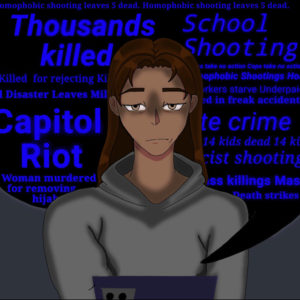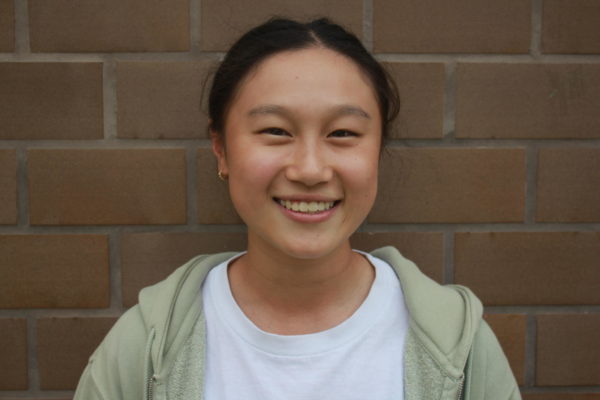Frequent shooting threats place DVHS in the “Boy Who Cried Wolf” situation
Feelings of desensitization due to the frequency of the shooting threats draw a parallel to the story of the “Boy Who Cried Wolf.”
March 1, 2023
Within a span of three months, Dougherty Valley High School has experienced three separate shooting threats, creating a growing atmosphere of desensitization on campus despite staff commitment to approach any potential threat with the necessary precaution.
The past three shooting threats at DVHS all triggered a “secure campus” where teachers were instructed to lock their doors and students were not allowed to leave the classroom. A secure campus is a preemptive measure that does not signify a credible threat, but allows administrators to conduct an investigation with minimal distraction.
DVHS administrators are trained in relevant, standard procedures derived from the I Love You Guys
Standard Response Protocol. The San Ramon Valley Unified School District works closely with local police and fire departments, recognizing the essential role community partnerships play in adequately handling threats made on campus.
DVHS Principal Evan Powell provides insight into his role in carrying out safety and emergency response procedure specific to shooting threats.
“Between my calls down to the district office and police, everything else gets pushed aside and this [becomes] our number one priority. We [secure the campus] as needed to investigate; that way we can try to be as swift and efficient as possible,” Powell explains.
District officials are informed of unfolding events in order to update community members and allow site administrators to focus on taking responsive measures.
“I work with our communications department at the district office. They have all the information and they help me with writing [the announcements] because I can’t do it all at the same time,” says Powell.
While administrators may approach these situations vigilantly, the frequency of these uncredible threats within a short period of time has caused students to become skeptical of the seriousness of such threats.
Senior Alina Goli says, “I genuinely thought the threats were silly. I don’t think anybody else around me took them very seriously because this has happened so often this year. Nothing serious has happened from them, so I didn’t take them seriously.”
Beyond DVHS, school shooting threats across the nation have been on the rise. According to USA TODAY, in 2022, schools across the nation were flooded with 30 false shooting threats within the span of a week. Counselor Carrie Fox explains that the events across the state and nation may have contributed to some kind of normalization.
“Students may not think that something real is going to or could happen because of [this rising] prevalence, not just here at DVHS. It is sad to see because it could be kind of like the “Boy Who Cried Wolf” situation,” Fox says.
Education code and board policies that prioritize confidentiality have limited the information students are provided with regarding shooting threats, creating an environment where such threats seem insignificant.
Goli says, “If we knew more information about what’s going on, we would take threats a lot more seriously. Every single time it just seems like there’s been a note in the bathroom and then administration [moves on].”
A student, who would like to remain anonymous, explains that students are not aware of how serious these situations can be, with a lack of discussion around the topic augmenting the issue.
“There are certain students who are using this as a way to get out of tests or to get out of school. But nobody’s actually talking about it in classrooms or trying to instructing students on why that is wrong,” the student shares.
A prominent solution that has emerged nationwide in response to school shooting threats is to increase social workers available to students. Emphasizing social and emotional wellbeing, Dougherty retains 10 counselors to accommodate the student body and recently introduced the Wellness Center, a space for students to take a break whenever necessary.
Fox believes her role as a counselor amidst these situations is to be the trusted person students can comfortably reach out to.
“I think our number one part is to just be here and be able to be present for students and listen to what their experiences are, helping them access resources.”
Although resources are available at DVHS, Fox shares that they are underutilized, especially when it comes to addressing stress around shooting threats. Junior Eesha Pulapa explains why this may be.
“I think that because there is a general environment of desensitization, students are less inclined to speak to counselors whenever they have an issue. If students are constantly shown that these threats don’t matter, the resources provided to them won’t help in the way they were intended.”
Parents, many of whom did not grow up in an environment of frequent shooting threats, display more concern towards threats than students do. Powell and Fox both mention some parents approaching them with questions. Some choose to keep their kids home while the threat is ongoing.
English teacher at DVHS and parent of two kids, Justin Worley reflects on the situation through multiple perspectives.
“Now that I have kids, even if the police say it is not a credible threat, [I think] what’s the value [of going] that day? Parents do what’s right for them, [and] I’m glad that the schools in the district are accommodating to that.”
Although shooting threats at DVHS has not manifested, administrators actively continue to address the gravity of the situation as we adapt to a changing school environment.
Powell expresses, “In my position, I will always take it seriously and act as if it was a real threat because I don’t know [if it would happen]. We’re going to trust the system and process and the training we’ve had. You can’t ever let that guard down.”





